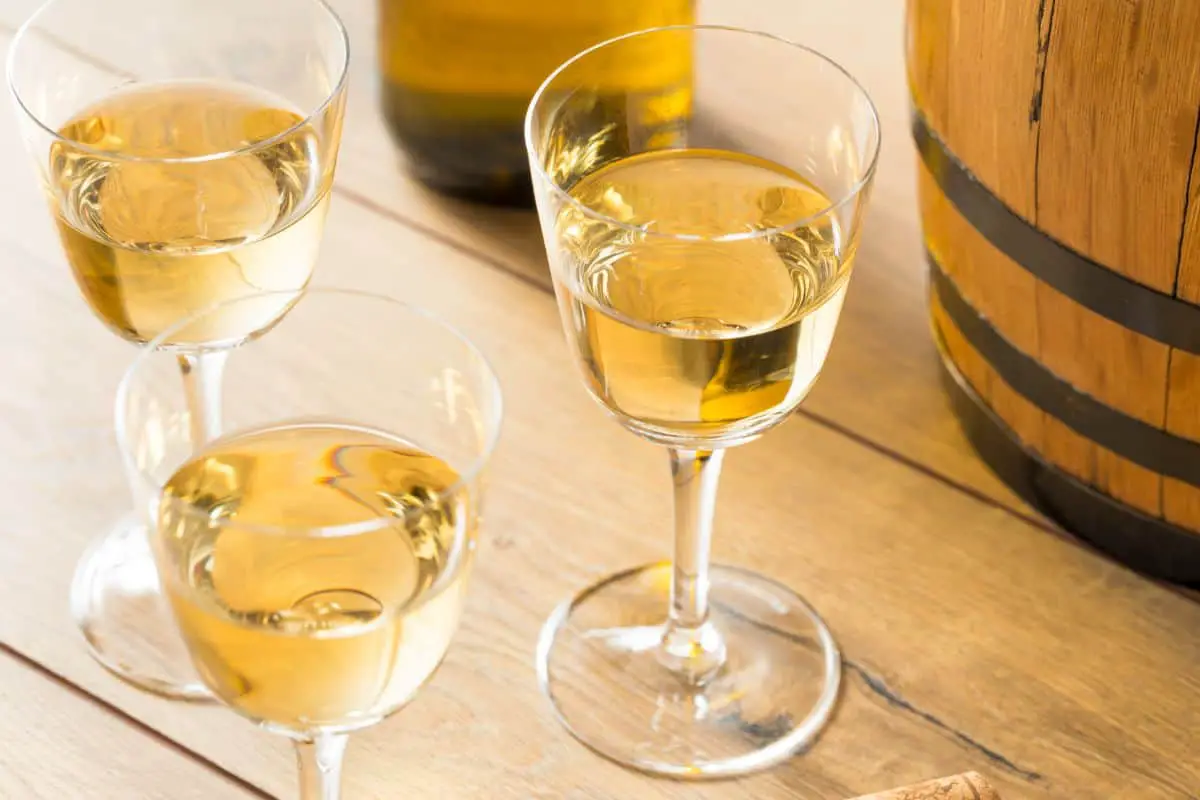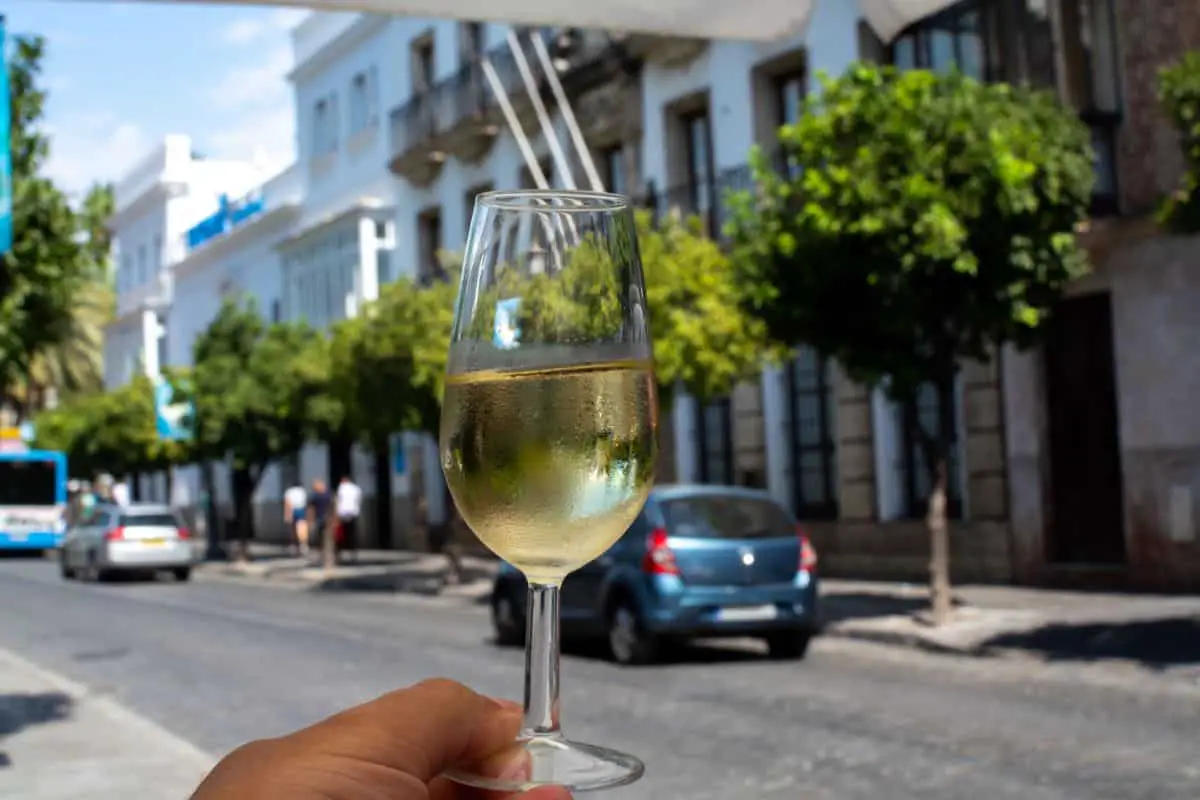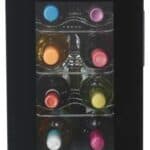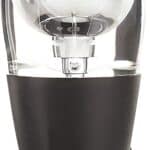If you’re a big wine enthusiast, you may regularly try a variety of wines.
Perhaps sometimes you try a full red wine in the evening, or perhaps you go out and enjoy a sunny afternoon with a glass of crisp white wine by your side.
However, a type of wine that you may not have tried is sherry wine.

It doesn’t have a very good reputation sadly, often being joked about as being far from a serious and complex wine, instead perhaps best enjoyed by more casual wine drinkers.
However, this reputation isn’t fair, and the wine is worth your time. But why is that – and what is sherry wine anyway? Well, we’ve got the answers for you.
In our guide below, you’ll find out just what exactly a sherry wine is, as well as detailed information on how it’s produced, as well as the many varieties of it that you can enjoy next time you go to buy some.
And you will, after you’ve read this article!
What Is Sherry Wine?
To begin with, let’s have a look at answering the key question.
Sherry wine is a fortified wine, which means that it’s a wine that has had a distilled spirit added to it (this spirit is often brandy, but can be others).
The wine is made from white groups, often primarily being the Palomino grape.
Sherry can come in all kinds of different varieties, such as light versions that bear similarities to white table wines.
However, you can also get sherry in darker versions.
These heavier types are achieved by letting the wine oxidize while it ages in the barrel, which means that it comes into contact with oxygen and changes.
Some people picture sherry as a sticky sweet wine, perfect for desserts, but the truth is that many sherry wines are actually quite dry.
However, there are sweet styles of sherry that you can buy if that’s what you’re after, and these have gained popularity over past years.
Sherry wines come in a range of different alcohol contents, but all of them are unified in the fact that they are very high.
Some sherry wines will be 15% alcohol by volume up to 22% ABV. You can often tell the ABV by what type you’re getting.
Dry sherry wines have the lowest ABV, usually ranging 15%-15.5%, while the sweetest sherry wines will reach heights of 22%.
Serving Sherry Wine
You have a variety of ways that you can use your sherry wine. For one, it’s an essential ingredient to many terrific cocktails, such as the rebujito.
On top of that, you can use sherry in your cooking.
You’ve probably heard of the Sherry trifle, which is a lovely alcoholic twist on a classic dessert, giving it an extra bit of kick and warmth.
However, obviously you can just drink sherry on its own. For all sherry wines, you’ll want to keep it chilled, to keep the flavor.
However, the chilling temperatures can vary depending on what type of sherry you have.
For example, if you have a Amontillado Sherry, then you’ll want to have it lightly chilled at anywhere between 50 and 57.2 degrees fahrenheit.
However, if you have a type of Cream Sherry, which is a very sweet dessert sherry, then you’ll want to have it chilling at around 44.6 to 48 degrees fahrenheit.
The same temperature goes for when you’ve got a Fino Sherry or a Manzanilla Sherry.
How Is Sherry Produced?

All sherry wine is made from white grapes, and only three varieties are ever used.
These are palomino grapes, moscatel grapes, and pedro ximénex grapes.
The first of these, the palomino, is primarily used for creating dry wines. The other two varieties, however, are used for making sweet wines.
However, all of these grapes must be grown properly too. This means that their growing regions need to have the right climate.
The Jerez district is favored, which has an average temperature of 64 degrees fahrenheit. On top of this, they need to be grown in the best soil.
Three types are used: the light Albariza, the yellow Arenas, and the dark Barros. They have good degrees of sand and clay, and help the grapes to grow well.
The grapes are then fermented for about two months in vats, before being sampled and graded in potential. After that, the liquid is fortified.
The distilled spirit is mixed with more mature sherry (sherry that has already been made and aged) to make a blend, and then that is mixed with the young sherry to better balance it – because stronger alcohol can spoil weaker alcohol.
After that, the wine is put into wooden casks where it’s left to age.
While that’s happening, they develop a layer of yeast-like substance, which helps to protect the drink from too much oxidation.
Sherry Varieties
We’ve already mentioned a few of the sherry varieties that you can get when we looked at chilling temperatures, but now we can go into more detail.
Fino
This is the most popular, as well as being the palest and driest tpp.
Amontillado
This is darker than Fino sherry, but lighter than the Oloroso variety that we’ll cover next.
These are made dry, but are sometimes sweetened – when their name becomes inauthentic.
Oloroso
This is rich and dark, and is the most alcoholic of all sherries. They are made dry, but can come sweetened, where they are often called a Cream Sherry.
Manzanilla
This is far from Oloroso, instead being a very light type of Fino Sherry.
They can be bought in a Pasada variety, which has been aged longer for better flavor.
Final Thoughts
Sherry wine is delicious and comes in loads of varieties, so use our guide to find the best for you!
- How to Learn Wine Tasting: Essentials for Beginners - March 10, 2024
- How to Learn to Like Wine: Cultivating an Appreciation for the Vintner’s Art - March 10, 2024
- Thanksgiving Sangria: A Flavorful Twist to Your Holiday Table - August 27, 2023








